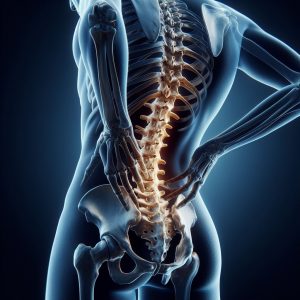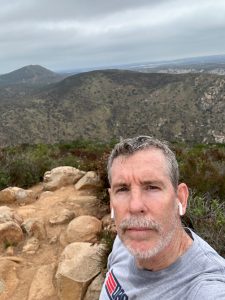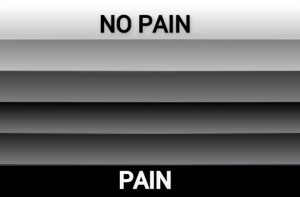The Side to Side Lunge is an exercise within the Pain-Free Movement Specialist sequencing as a B/C exercise. A B/C exercise will generally fall in the middle or toward the end of a Function First corrective exercise program. We use this exercise to help create some disassociation between the pelvis and spine as we load the hips independently. The nuances of this exercise make a big difference. Be sure to pay attention to all of the details to get the most out of this exercise.
Posts Tagged ‘lower back pain’
Side to Side Lunges for Hip and Spinal Health
Friday, November 8th, 2024Relax the Lower Back with Both Versions of the 90-90
Wednesday, July 17th, 2024Have you ever been standing at a cocktail party, or Christmas shopping and your back just starts to get achey and tired? Or, after awkwardly lifting your baggage from the overhead compartment, your back tightened up?
Sometimes the muscles of the lower back just need a break NOW. And sometimes lying down is not an option. Using the infamous Wall Sit as an option when your back is not cooperating may be the short term reprieve your lower back needs.
In this brief video, Anthony shares why and how this could be your “break glass in emergency” option. Taken from his book, The Pain Free Program: A Proven Method to Relieve Back, Neck, Shoulder and Joint Pain, you’ll quickly understand the value of these two options.
Stacking the Deck for Long Term Health Benefits
Thursday, March 28th, 2024A couple of weeks ago I worked with a close friend of mine who has been experiencing a bout of lower back pain. The lower back was not only painful, but it was starting to interfere with his work and his ability to earn a living.
This was not his first rodeo. He has seen me at various times in the past and he has been a close friend for about 25 years and is in his mid-fifties. Because of our friendship, I felt compelled to do something differently with him that smacked of “tough love”.
After getting an update on his situation, pain levels, provocative movements, interventions to date, etc., I handed him a blank piece of paper. On the piece of paper, I asked him to write all the proactive steps he is taking toward his overall health. Not his back, but his overall health.

He handed me back the piece of paper with what he wrote. I read his answers and placed his handwritten list back in his file. The list included:
• Walking 30-60 minutes, 3 to 4 times per week
• Intermittent fasting
• Jacuzzi 2-3 times per week
After we finished his session and he felt 95% better (thankfully), I pulled out his handwritten list and gave it back to him. He looked at me in bewilderment, wondering why I was returning his list. I looked him in the eyes and said, “you decide if this list is long enough”.
We both paused for a second. And I could see in his eyes, as he stood there without saying a word, that he got my point.
This is a guy who has been successful all his life in business and who has friends that would die for him. He has been happily married for 20 years and together they have raised a son that any parent would be proud of. But when it comes to his health, I would grade him a “C” student.
We all must decide if we are going to continue to put out fires or instead be proactive. And for anyone in their forties and above, much of what we are and will encounter is not an acute event. It is a product of cumulative degradation to our metabolic, cardiovascular, musculoskeletal, neurological and cognitive health.
I am now fifty-seven years old, and my week involves the following in some combinations. I do not do all of it every day, but I do all of it every week:
• Function First corrective exercises (6-7x/week)
• Heavy weight training (2x week)
• Functional full body resistance training (3x/week)
• Zone 2 cardio (2-3x/week)
• Sustained cardio 20-30 minutes at approximately 80-85% of my max heart rate (1-2x/week)
• Whole body vibration with Power Plate (4-5x/week)
• Full body mobility work with Core-Tex (6-7x/week)
• Foam rolling and/or percussion gun (4-6x/week)
• Cold plunge (1-2x/week)
• Cold shower 2-3 minutes (7x/week)
• Infrared light panel (7x/week)
• Intermittent fasting (7x/week)
• My version of Bulletproof coffee (7x/week)
• Meditation/theta state using BrainTap headset (7x/week)
• Daily gratitude
• Core-Tex Sit for hip and lumbar variability 2-3 hours per day (7x/week)
• Pescatarian, high fiber diet (7x/week)
• Heat and massage back wrap (Hyperice Venom) 2-3x/week
• Nutritional supplementation7x/week
• Early morning sunlight in my eyes within 30 minutes of waking (7x/week)
• Spend 40% of any television time prone and on my elbows to extend the spine (5-6x/week)
What do I strive for this year?
• Time in an infrared or traditional sauna (3-5x/week)
• Massage/body work (1-2x/month)
• Less mouth breathing, more nasal breathing (continuous)
• Improve body composition with reduced body fat by 3%
This is not a list to boast or make anyone feel overwhelmed. And you might also be asking, “where the hell does he find the time?”. In all honesty, much of it is built into my daily schedule and many of this list happens in blocked time, such as exercise, and others are done concurrently with other activities.
What I hope to communicate by sharing this is the opportunities that are available to all of us to seek out the most accessible levers we can pull that move our health-o-meter in the positive direction. When you come to see me with a chronic back, or neck or other issue, I know those who are proactive about their health will respond the fastest because you are stacking the deck in your favor.
At the end of the day, strategic exercise is still the most beneficial drug out there. Do it smart. Do it often. And appreciate how truly interdependent all the systems of our bodies are and what is going on under the hood is often not visible until we are in crisis mode.

A Passive Hip Flexor Stretch for Lower Back Pain
Tuesday, September 26th, 2023The Thomas Test is an orthopedic assessment for passive hip flexor length. But the test can become the exercise and can serve as a beneficial hip flexor lengthening exercise. For those with lower back, sacroiliac and even hip pain, this position can often provide safe, therapeutic benefits.
Because this is a passive stretch done while supported on a table or bench, you can completely relax into it without worrying about stabilizing your body. For many people, this exercise not only provides an effective lengthening of the hip flexors, but may also provide symptomatic relief.
In this video, we show you the nuances to getting the most out of this exercise with the set up and modifications.
Abductor Presses for Hip and S.I. Joint Help
Thursday, July 27th, 2023Many of you have used our Level A Abductor Presses as part of your personalized program or as one of the programs from The Pain-Free Program. In this video, I use a little different format to share with you the “why” and how it benefits your lower back and hip.
There is a distinct difference of what occurs at the hip joint and sacroiliac joint when you press against an immovable force or strap like we do with Abductor Presses versus a mini band OR your leg moving freely in space. This video explains the difference and benefits of one of our Function First exercises.
Improving Internal Hip Rotation with Spider Walks
Wednesday, May 24th, 2023We talk a lot about the importance of hip rotation and the importance of hip mobility on the lower back above, and the knees below. People often focus on tight hip flexor and the front to back mobility of the hip. All of it is very important, but if one is going to be forgotten, it is probably rotation, and more specifically, internal hip rotation.
In a previous post, we provide another hip rotation corrective exercise called Femur Rotations. Spider Walks have a greater emphasis on internal hip rotation and has added benefits to the foot and ankle. The Femur Rotations are great for active internal and external rotation without load on the hips and help with elongating the hamstrings. Spider Walks are done with the knees bent which removes any limitations that the hamstrings might cause.
Femur Rotations for Hip and Lower Back Care
Wednesday, April 26th, 2023Golf, pickleball, tennis are all rotational sports. But so is tying your shoe. OK, it’s not a sport, but it is a rotational activity…one of thousands we perform every day. And because the hip is the largest joint responsible for rotation in the body, it makes sense to keep that rotational function highly tuned.
Two primary reasons for this:
1. Like every joint, the hip is optimized for longevity and function when it can spread and dissipate stress throughout the entire joint surface. This only happens if the joint is free to move in all of its designed directions.
2. Adequate rotation of the hips keeps unnecessary and potentially stressful rotation out of the lower back. The lower back is not designed for much rotation, but often is expected to absorb it when the hips lack needed rotation.
This video will demonstrate and explain one of the exercises from The Pain-Free Program that is great for the hips while keeping the lower back stress free.
If you are interested in a copy of The Pain-Free Program: A Proven Method to Relieve Back, Neck, Shoulder and Joint Pain, email us directly and we can help get you a copy.
Dead Bug Variation to Regulate the Core
Wednesday, June 8th, 2022The following is a Level B in the Pain-Free Movement Specialist Levels of Designation
The Dead Bug is a popular and effective core stabilization exercise. And although it is done supine on the floor, it has a level of difficulty that may be underestimated.
When working with chronic pain clients, particularly those with lower back related issues, the many common versions of the Dead Bug may actually be too challenging. With the version we share below, the degree of difficulty can be self regulated. This means the individual has a degree of control over the intensity of the exercise by way of the force that they apply with the upper body.
With this control, the client/patient has the ability to choose a level of difficulty within their capacity and reduce the sense of threat of further hurting themselves. They will also be able to better assess their success or lack their off with fewer moving parts to the exercise.
Scoring Your Wins and Beating Your Pain
Monday, April 11th, 2022If I have had the pleasure of working with you, you have probably heard me speak of the need to score your “wins” as you move through the process of beating your pain. “Wins” are those smaller victories along the way to the ultimate goal of eliminating pain and doing all the things we physically want to do.
For so many of those challenged by chronic pain, their assessment of their pain is either they have it or they do not. This black and white view of the situation can be one of the most burdensome mindsets, hindering one’s progress. The reality is that there are many, many shades of grey in between.

If the view is black and white, there is no win unless the pain has been completely eliminated forever. Eliminating the pain forever is an achievable goal worth pursuing, but without a progress meter along the way, we do not know if the goal is right in front of us or 6 months or 6 years away.
Let us say that you have lower back pain and at its worst it is an 8 (on a scale of 1-10 with 10 being the worst). The back pain is an 8 whenever you stand too long. And when the pain reaches an 8, your back is aggravated for a couple of days afterwards. On average your pain is a 5/6 on most days if you take 400mg of Tylenol, twice a day.
You are frustrated and fed up and decide to begin a new program (Function First, chiropractic, physical therapy, acupuncture, etc.). At Function First, we would want to know more accurately what is “too long” for standing that gets you to an 8. Is it 5 minutes or 50 minutes? These are more objective time frames and easier to compare. We would also want to know more accurately how long afterward is your back pain aggravated? Is it 24, 36, 48 hours? If you do not know, this is a major reason why we ask you to track and journal your experiences. By journaling, you are not reflecting on a situation when you are in the throes of the emotions associated with the pain.
Scoring Wins
After two weeks of your new program, you still have pain that is an 8. In the black and white pain scenario, you are exactly where you were two weeks prior, minus the time and money you have spent. But in the finding wins on our way to the ultimate goal, progress is there if we look for it.
There are 3 fundamental ways we can gauge our progress. They might present individually or in combinations of two or more:
1. The overall level of pain is less. Your average pain of a 5/6 on most days is now a 2/3. Or your pain is still a 5/6 but you no longer need to take the Tylenol to control it. You still have pain but that is progress!
2. Your tolerance is greater. You could only stand for 15 minutes, and the pain was an 8. Now you can stand for 30 minutes, and the pain is an 8. Yes, the pain is still an 8, but you have increased your standing tolerance 100%. Another example might be your range of motion. You would squat to 45 degrees and your knee pain would be a 6. Now you can squat to 90 degrees before your knee pain is a 6.
3. Your recovery is faster. You stand for 15 minutes, and the pain is still an 8. However, you do your Function First exercises, and the pain is back down to a 5 within a couple of hours. You are no longer physically and emotionally burdened with the extended recovery time every time you push your body to stand. Or you love golf or tennis and could only play once a month, because your back needed that long to recover before you could play again. Now, your back still is painful after a round or a match, but because you are doing a strategic exercise program, you can now play once a week as your body gets more functional and stress is removed from the back.
As I share with all my clients, this is not something anyone should be convincing you of. It is simply recognizing progress (wins) that have occurred on your journey. This provides extremely valuable affirmation to the brain that you are on the right track and making progress. It provides hope and motivation to continue to strive for what is possible.
No one wants to be spinning their wheels hoping one day that magical door to a completely pain-free life will suddenly open. With the right intervention, supportive and educational coaching and acknowledging your wins, the path is clearer, and the goal is within reach.